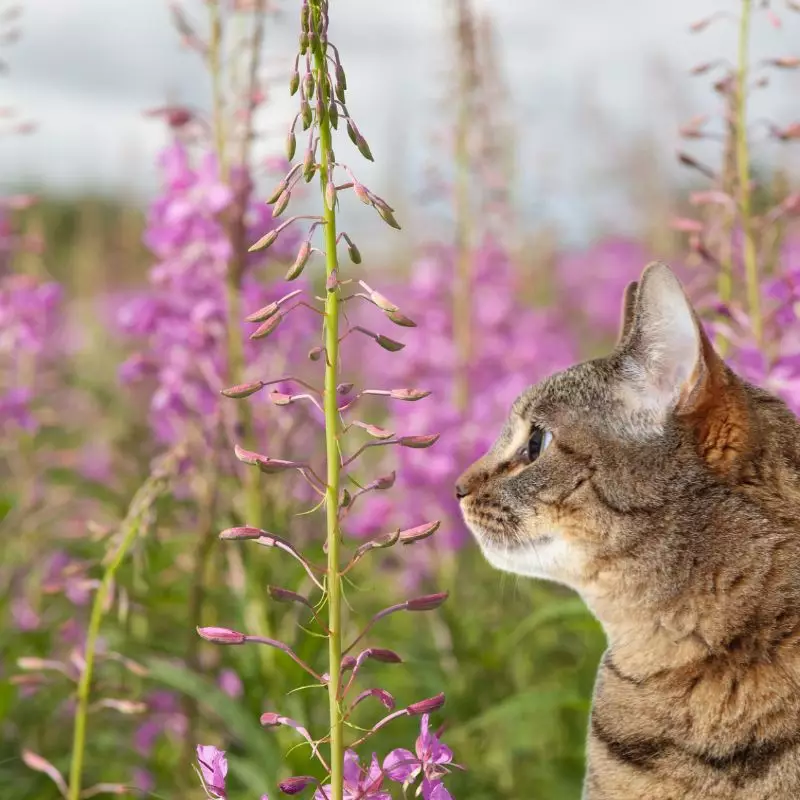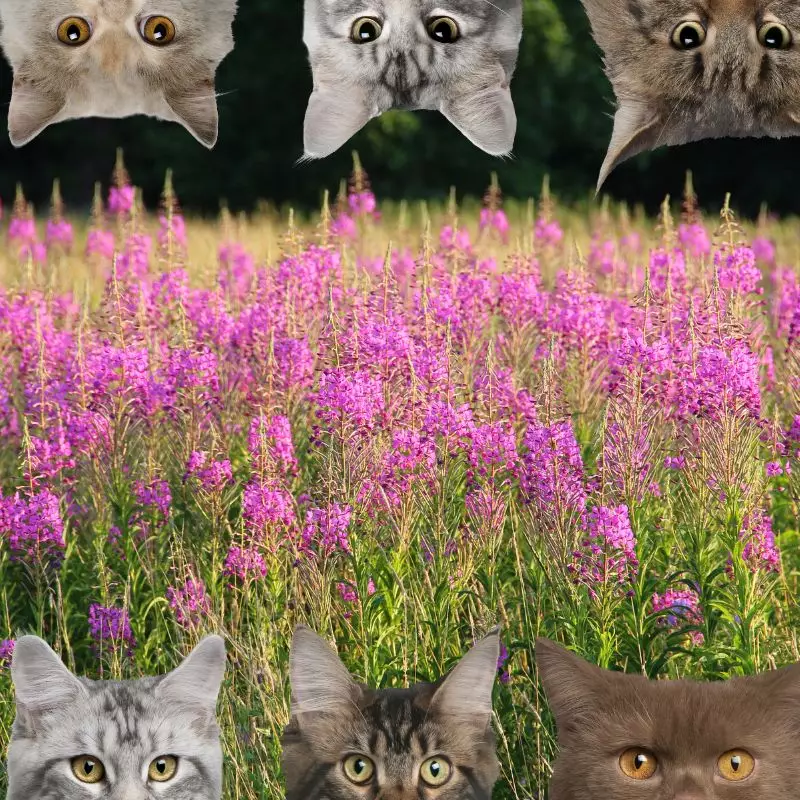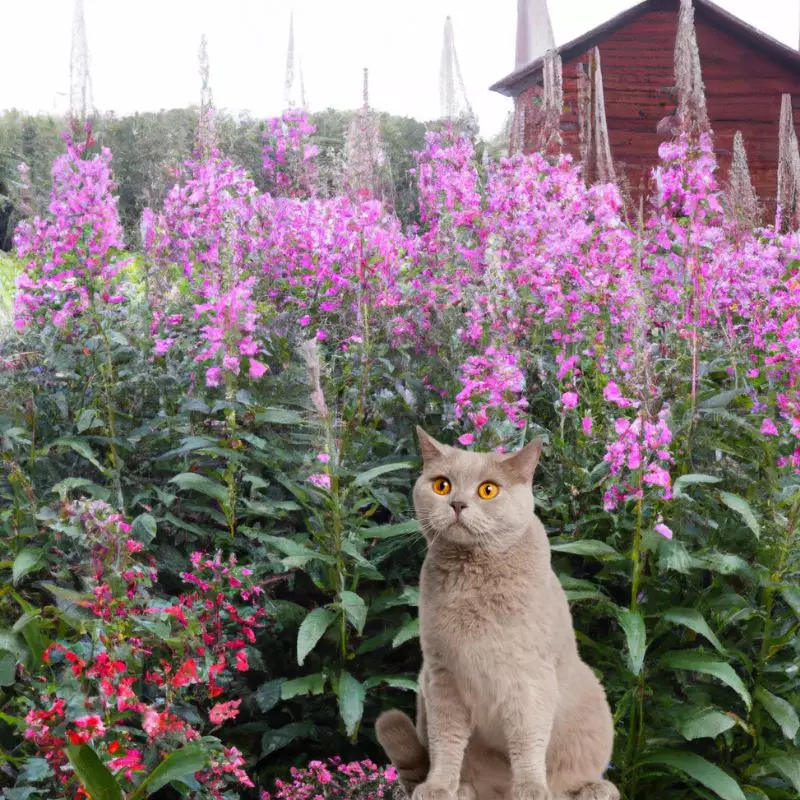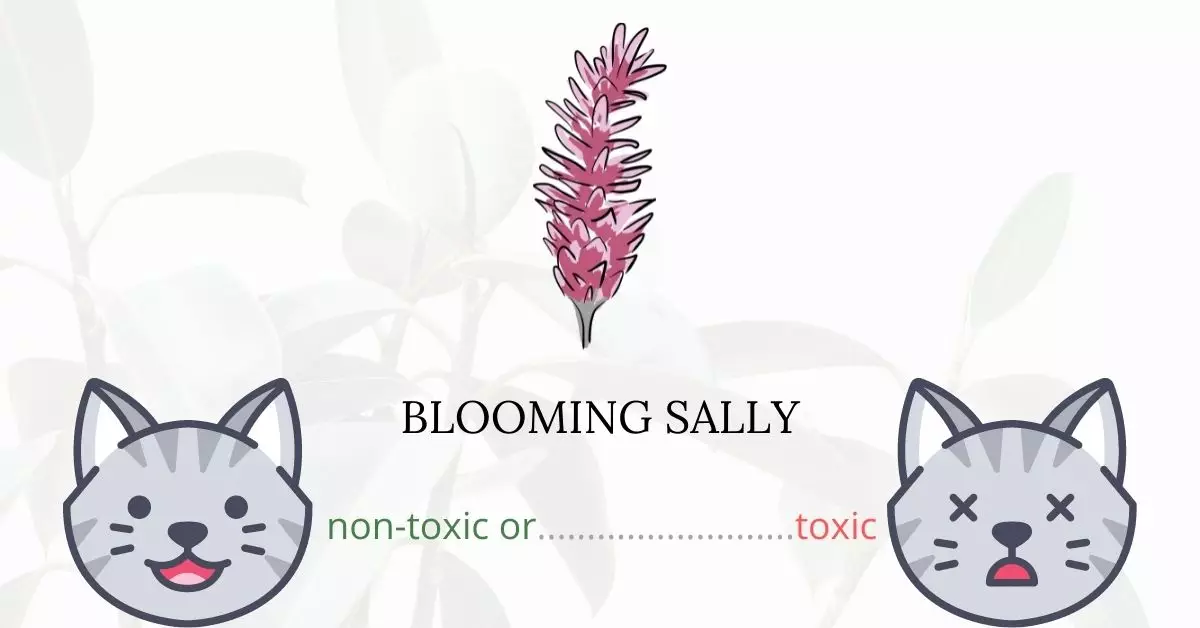Contrary to some beliefs, Blooming Sally or Fire Weed is not toxic for cats. These radiant blooms pose no threat to your feline companions, ensuring their safety and well-being.
This article has been crafted in collaboration with a team of experienced DVMs (Doctors of Veterinary Medicine), whose invaluable insights allow us to offer precise and current information on the potential hazards various plants, such as Blooming Sally, may pose to cats. The collective knowledge and experience of these veterinary experts, combined with our meticulous research, aim to clarify doubts and concerns pet owners might harbor regarding the implications of these plants on their pets’ health. Furthermore, we have diligently referenced high-authority websites, including ASPCA and PetMD, to substantiate every piece of information and to ensure that it is credible and up to date.
It is noteworthy that Blooming Sally is also classified by the American Society for the Prevention of Cruelty to Animals (ASPCA) as non-toxic to dogs and horses, reinforcing its status as a safe plant around animals.
Can Cats Eat Blooming Sally or Fire Weed?

Yes, felines can eat blooming sally. Ingesting small portions of this plant will not cause any problems in your cat. But, this does not imply that your cat can feast on blooming sally regularly.
Plants should not be included in a cat’s regular diet. Carnivores such as felines do not have the proper enzymes to completely process plant matter. If they eat too many plants, it may cause them to suffer from gastrointestinal issues such as mild vomiting and diarrhea.
What is Blooming Sally or Fire Weed?

Willow Herb, Great Willow Herb, and Fire Weed are all names for blooming sally. The common name fireweed refers to its proclivity to emerge following fires. Blooming Sally is a rhizomatous perennial wildflower that grows well in full sun to partial shade, with well-drained soil with rich organic content. It struggles in hot southern summers, preferring midday shade and wet soils, and thrives in the state’s mountain area. Blooming Sally may be found in a range of settings, including roadside ditches, clearings, and open woodlands.
This Onagraceae plant has reddish stems that are normally simple, upright, and smooth, with scattered alternate leaves. Blooming Sally’s leaves are spirally arranged, whole, narrowly lanceolate, and pinnately veined, with secondary leaf veins anastomosing and uniting to form a continuous marginal vein just inside the leaf margins.
The blooming inflorescence is a symmetrical terminal raceme that blooms from bottom to top, creating an elegantly tapering form. The blooms are two to three centimeters in diameter, with four magentas to pink petals and four smaller pink sepals behind.
Keeping Cats Away From Blooming Sally or Fire Weed

Felines are naturally inquisitive animals. They like wandering around and testing things that they find interesting — including plants. Since blooming sally commonly grows in informal areas including meadows, woodland gardens, borders, and mass plantings in rock or cottage gardens, cats who like wandering outdoors are more likely to encounter this plant.
While blooming sally may not cause them major harm, it is still best to keep them away from this plant to be on the safe side.
Train your cat to stay away from unfamiliar plants. Limiting their access outside will also help in lessening the chances of getting in contact with plants, both toxic and non-toxic.
Plants to Avoid For Your Cats
If you are a cat owner and unsure if the plants growing in your yard are harmful to your cats, check out this list of toxic plants for cats. You can also check our list of non-toxic plants for cats.





